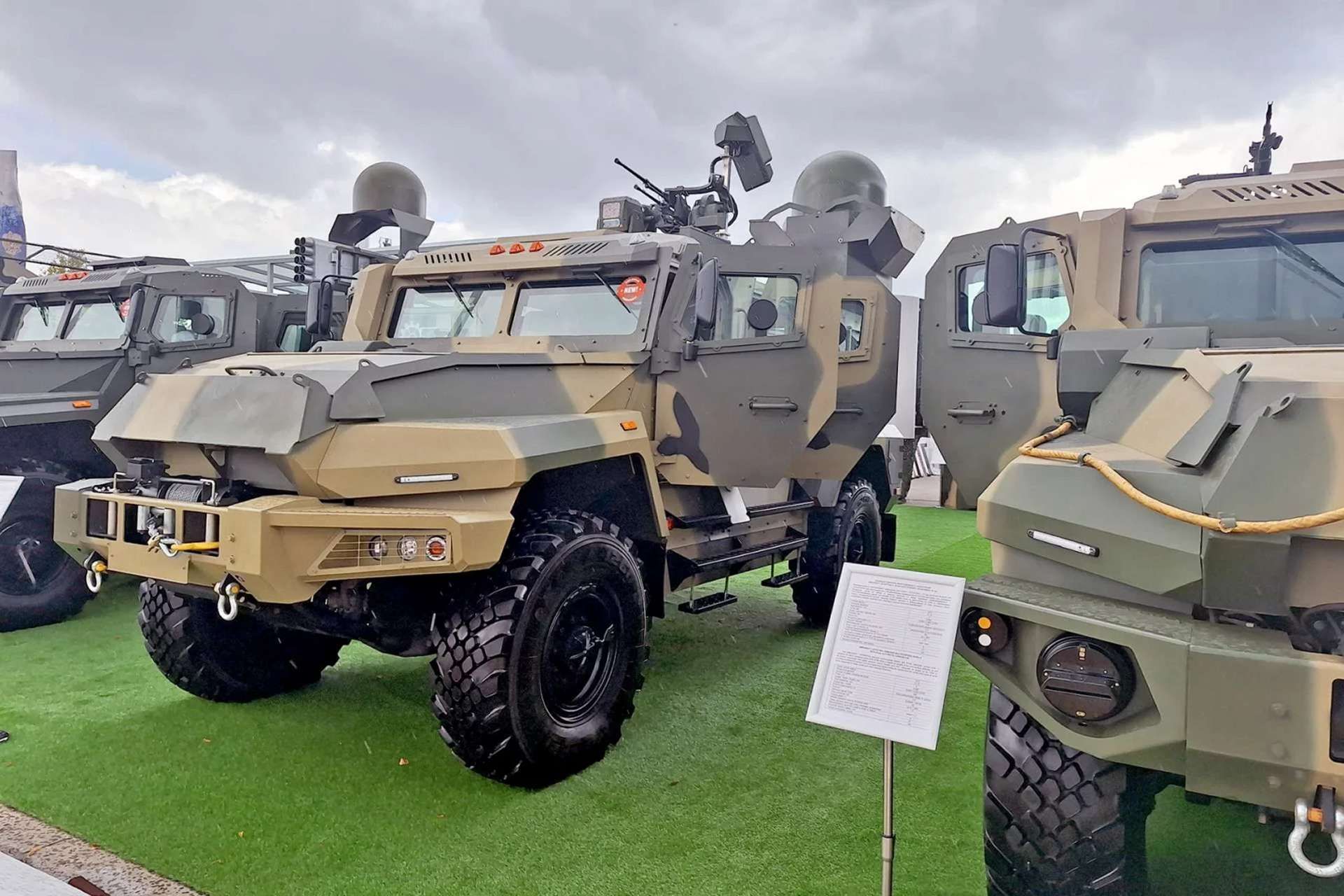Breaking News
Russia Successfully Tests Rapira-2 Counter-Drone System for Future Deployment in Ukraine.
On September 27, 2024, the Russian army announced the successful live-fire trials of its latest anti-drone system, the "Rapira-2," during firing demonstrations conducted at the Kapustin Yar training ground. This new device marks a significant advancement in Russia's air defense capabilities against the growing threat of unmanned aerial vehicles (UAVs).
Follow Army Recognition on Google News at this link

Rapira-2 Counter-Drone System mounted on the AMN-590951 "Spartak" armored multipurpose vehicle (Picture source: Russian MoD)
The Rapira-2 is mounted on the AMN-590951 "Spartak" armored multipurpose vehicle, a platform developed in 2021 for the Streit Group and already employed by the Russian armed forces in various missions. The increased mobility offered by this vehicle allows for the rapid deployment of the Rapira-2 system in diverse environments, thereby enhancing the operational flexibility of Russian forces.
Equipped with a sophisticated radar and electro-optical complex, the Rapira-2 is capable of detecting, tracking, and neutralizing small aerial targets such as kamikaze drones and FPV UAVs. The system also integrates electronic warfare capabilities, enabling it to jam drone communications before engaging them with direct strikes if necessary.
The Rapira-2's radar and electro-optical sensors provide precise data on aerial and ground threats, facilitating rapid identification and effective decision-making. Once a target is identified, the system can choose between disrupting the drone's communications or proceeding with its immediate destruction.
At Forum-Army 2024, Russia also presented the Rapira-3, a variant of the Rapira-2 equipped with 80 mm S-8 rockets with proximity fuzes. Unlike the Rapira-2, the Rapira-3 uses unguided rockets, ideal for direct attacks against agile UAVs. Both systems are mounted on 4x4 platforms, ensuring high mobility and rapid deployment capability.
The Rapira family stands out for its low-cost approach, utilizing economical effectors while maintaining high operational efficiency. For example, the Rapira-2 is armed with 7.62 mm PKT machine guns, offering an economical and easily resupplied solution for neutralizing small aerial threats.
According to Russian military sources, the Rapira-2 will soon be integrated into Russia's broader military infrastructure, thereby strengthening the country's overall air defense capabilities. This integration underscores Russia's emphasis on developing effective anti-drone systems in the context of modern conflicts, notably the Russo-Ukrainian war.
The Rapira-2 and Rapira-3 systems are positioned against similar solutions developed by other countries. For instance, the United States' C-UAS VAMPIRE system uses laser-guided Hydra 70 rockets, although these solutions are generally more expensive due to the advanced guidance technology.
In the context of the Russo-Ukrainian war, both parties have shown a tendency to adopt and adapt each other's effective tactics. If the Rapira-2 proves to be effective, it is not excluded that Ukraine will develop or deploy similar systems to counter aerial threats.

Rapira-2 C-UAS is equipped with PKT 7.62 mm machine guns (Picture source: RG)


























